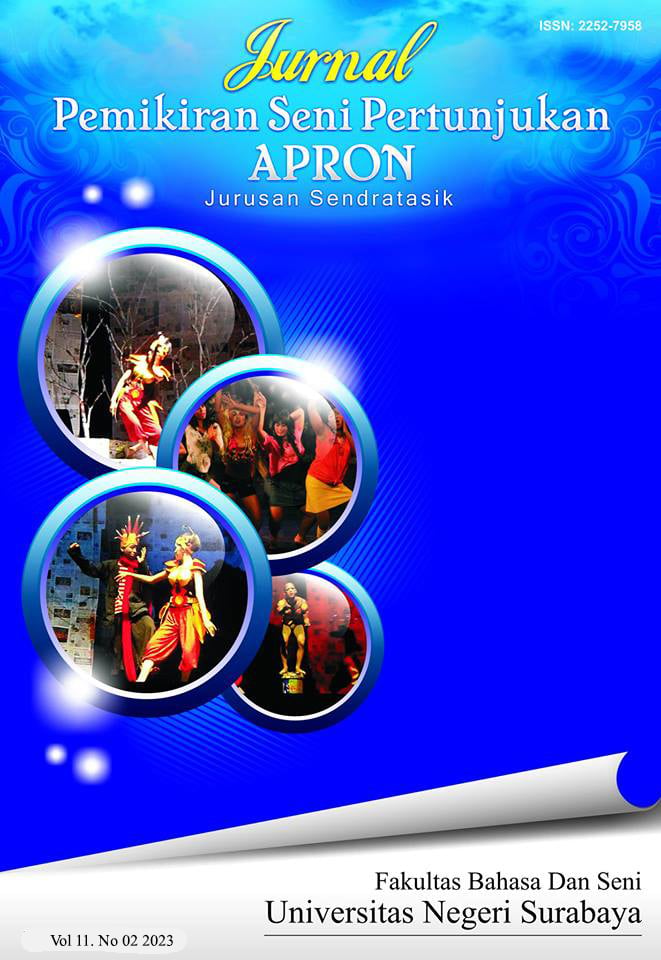THE SYMBOLIC MEANING OF SABETAN IN TIBAN RITUAL PERFORMANCES IN WAJAK BOYOLANGU VILLAGE, TULUNGAGUNG DISTRICT
MAKNA SIMBOLIK SABETAN DALAM PERTUNJUKAN RITUAL TIBAN DI DESA WAJAK BOYOLANGU KABUPATEN TULUNGAGUNG
Abstract
Tiban art is one of the arts resulting from the cultural civilization of the Wajak Village community which has existed since the 15th century. Tiban is an art passed down from our ancestors. Tiban comes from the word arrived which means falling during the dry season. The purpose of holding Tiban is an activity carried out communally by the local community, with the same belief in carrying out strength-fighting activities in the hope that "rain will fall". In the performance, Tiban is dominated by slashing movements carried out by Peniban carrying a whip. Pecut comes from sodo palm called Ujong. The sabetan movement in Tiban has a symbolic meaning as a symbol of language and communication. The aim of this research is to describe the symbolic meaning of the slashing movement in Tiban art in Wajak Boyolangu village, Tulungagung district. This research uses qualitative methods and uses the theoretical basis of performing arts, ritual performances, Tiban arts, and symbolic meaning. Data sources come from person, place and paper. Data collection techniques use observation, interviews and documentation techniques. To prove the validity of the data in this research, triangulation techniques were used.
The results of the research state that in modern times, Tiban performances are still performed by the people of Wajak Village. In its implementation, Tiban has 3 performance structures, which include the beginning, the time of the Tiban ritual performance and the end of the Tiban ritual performance. The symbolic meaning in the Tiban ritual performance is intended as a sacrifice for every drop of blood that comes out of the body as a result of scratching an Ujong with the skin. Tiban has 6 types of slashing movements as a medium for expressing the purpose it wants to convey. This movement is the muwung movement which has a constitutive symbolic meaning. Nadah movements that have expressive symbols. The movement of the nebee is a symbol of knowledge. Actions that have a prefix symbol. The stance movement has a symbol of moral movement, and the ngece movement has an expressive symbol.
Downloads
Downloads
Published
How to Cite
Issue
Section
 Abstract views: 49
,
Abstract views: 49
, PDF Downloads: 168
PDF Downloads: 168











